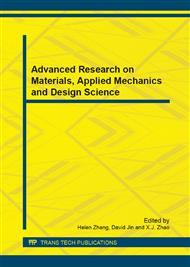p.181
p.185
p.189
p.193
p.197
p.201
p.207
p.211
p.215
The Novel Model of Construct Materials Science and Information Based on Association Rule Mining
Abstract:
The material is used by humans to manufacture the machines, components, devices and other products of substances. Association rules originated in the field of data mining, people use it to find large amounts of data between itemsets of the association. Apriori is a breadth-first algorithm to obtain the support is greater than the minimum support of frequent itemsets by repeatedly scanning the database. This paper presents the construction of materials science and information model based on association rule mining. Experimental data sets prove that the proposed algorithm is effective and reasonable.
Info:
Periodical:
Pages:
197-200
Citation:
Online since:
June 2013
Authors:
Price:
Сopyright:
© 2013 Trans Tech Publications Ltd. All Rights Reserved
Share:
Citation:


